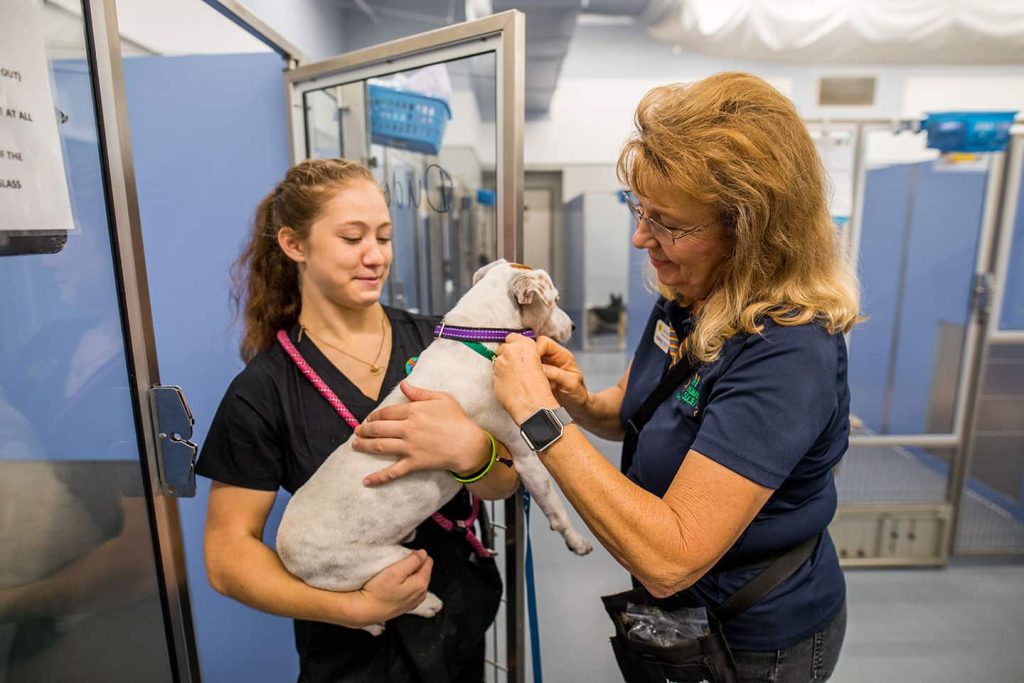Volunteering in Animal Shelters: How to Contribute to the Success of Rescue Adoptions

The Role of Volunteers in Promoting Animal Welfare
Every year, millions of animals, including dogs, cats, and even exotic pets, find themselves in need of loving homes due to various circumstances such as abandonment, neglect, or family situations. Animal shelters serve as vital havens for these animals, offering services such as shelter, medical care, and the hope of adoption. Yet, the ability of these shelters to function effectively relies heavily on dedicated volunteers who are willing to lend their time and compassion. By volunteering at animal shelters, you not only have the opportunity to enrich the lives of these animals but also play a crucial role in increasing their chances of being adopted into loving families.
Volunteering at an animal shelter brings numerous benefits, both for the animals and for the community at large. Here are some of the most impactful ways volunteers make a difference:
- Socialization and Training: Animals in shelters often experience stress and anxiety due to their circumstances. Volunteers can help alleviate this by socializing and training them. Simple activities like playing, walking, or introducing them to new environments enable these animals to become more comfortable around people and other pets. This not only increases their chances of adoption but also ensures they are better prepared for life in a home environment.
- Awareness Campaigns: Volunteering also involves engaging the community through events, fundraising activities, and educational outreach. For example, hosting adoption fairs at local parks or participating in community festivals can raise awareness about the numerous animals in need of homes. Campaigns that highlight individual animals’ stories or showcase their unique personalities can resonate with potential adopters, ultimately leading to more successful matches.
- Hands-On Care: Daily tasks such as feeding, walking, grooming, and cleaning are essential to maintaining a healthy shelter environment. Volunteers provide necessary care that enhances the well-being of animals awaiting adoption. This hands-on involvement not only improves the animals’ quality of life but also fosters a sense of community as individuals come together for a common cause.
Research consistently indicates that shelters with strong volunteer programs experience significantly higher adoption rates. A shelter that actively involves community members can create meaningful connections between potential adopters and animals, enhancing the likelihood of successful adoptions. This connection often results in stories of happy reunions and lifelong friendships, underlining the essence of the human-animal bond.
Moreover, volunteering at animal shelters provides personal fulfillment. It allows individuals to develop new skills, meet like-minded people, and give back to the community in a tangible way. For those considering making a difference, the opportunities through volunteering in animal shelters are both rewarding and impactful. Your involvement can not only help rescue animals from discontinuation in the shelter system but also support the creation of nurturing environments where animals thrive and families form. Are you ready to embark on this enriching journey? Explore local shelters and see how your compassion and skills can directly contribute to making a difference in the lives of these deserving animals.
DISCOVER MORE: Click here to learn about the joy of adoption

Enhancing the Adoption Experience Through Volunteer Efforts
Volunteering in animal shelters goes beyond simple acts of kindness; it is an essential component in shaping positive experiences for both animals and potential adopters. A welcoming atmosphere within a shelter can significantly influence an applicant’s decision to adopt and, ultimately, ensure that the adopted pets find their forever homes. Below are some crucial ways in which your involvement can enhance the overall adoption experience:
- Creating a Welcoming Environment: Volunteers play a key role in making shelters feel friendly and inviting. Simple gestures, such as greeting visitors warmly and providing attentive service, can set a positive tone for potential adopters. When visitors feel comfortable, they are more likely to spend time interacting with animals, leading to deeper connections and increased adoption rates.
- Providing Information and Guidance: Knowledgeable volunteers can serve as invaluable resources for visitors. By sharing insights about individual animals—such as their temperament, needs, and unique behaviors—volunteers can help guide prospective adopters in making informed choices. This personalized attention fosters trust and satisfaction, ultimately assisting in successful adoptions.
- Organizing Meet-and-Greets: Coordinating opportunities for potential adopters to meet animals outside of their kennels can help spark connections. Volunteers can set up meet-and-greet events that allow families to interact with pets in therapeutic or play settings. Such interactions can demystify dogs and cats waiting for homes, allowing visitors to engage with them in a relaxed manner.
Statistics indicate that shelters with active volunteer programs typically report higher adoption rates. According to a study conducted by the ASPCA, shelters that involved volunteers in their outreach efforts noted a remarkable 30% increase in successful adoptions over a year. The direct impact of volunteering on adoption success highlights how crucial it is for shelters to harness community support to achieve their goals.
Additionally, volunteering not only benefits the animals and the shelters, but it also enriches the volunteer’s experience. Volunteers often leave their shifts feeling a sense of accomplishment and purpose, having made tangible contributions towards improving the lives of animals in need. The friendships formed among like-minded individuals create support networks that further nurture the mission of animal rescue.
For those considering a role in their local animal shelter, the potential to contribute meaningfully is immense. Whether through direct care, outreach efforts, or educational initiatives, each volunteer has the power to shape the future of rescue adoptions. By fostering connections, ensuring a positive environment, and providing essential information, you can significantly enhance the chances of dogs and cats finding loving homes. Are you ready to embark on this rewarding journey and make a difference in your community? Take the first step by reaching out to local shelters and exploring how your unique skills can contribute to the success of rescue adoptions.
| Advantages | Impact on Rescue Adoption Success |
|---|---|
| Increased Socialization | Animals that receive regular interaction are more likely to adapt to new homes and bond with potential adopters. |
| Enhanced Visibility | Volunteers can promote the shelter on social media, gaining attention and leading to higher adoption rates. |
| Educational Outreach | Volunteering often includes educating the community about responsible pet ownership, which can lead to informed adoption decisions. |
| Skill Development | Volunteers gain valuable skills such as animal care and public speaking, which can enhance their personal and professional lives. |
Volunteering in animal shelters goes beyond simply caring for animals; it plays a pivotal role in the success of rescue adoptions. By actively participating, volunteers can improve the socialization of the animals, which directly influences their ability to connect with potential adopters. Furthermore, the promotion of the shelter through volunteer-led initiatives increases visibility, drawing attention to animals in need of homes. This enhanced exposure is critical in achieving higher adoption rates.Moreover, volunteering also allows individuals to engage in educational outreach within the community. This engagement fosters an understanding of responsible pet ownership, leading to informed adoption decisions that are beneficial for both the animal and the owner. The personal benefits to volunteers, such as skill development in areas like animal care and communication, could serve as attractive incentives for new volunteers, enhancing their overall experience.As the connection between volunteering and rescue adoptions becomes clearer, it’s imperative for communities to recognize the value of participating in animal shelter initiatives. By investing time and effort in these organizations, volunteers are not only making a difference in the lives of animals but are also contributing significantly to the culture of pet adoption.
DIVE DEEPER: Click here to discover more positive training techniques
Maximizing Outreach and Education to Drive Awareness
In addition to creating a welcoming environment, volunteers play an essential role in enhancing the visibility of animal shelters within their communities. Effective outreach and educational initiatives can draw in more potential adopters and contribute significantly to successful rescue adoptions. Here are several impactful ways that volunteers can maximize these efforts:
- Social Media Engagement: In today’s digital age, social media serves as a powerful tool for animal shelters. Volunteers can assist by creating and managing social media campaigns that highlight adoptable animals, share success stories, and promote upcoming events. Posts that include eye-catching photos and engaging captions can reach hundreds, if not thousands, of users. According to a survey by the Humane Society, organizations that actively utilize social media report a 40% increase in adoption inquiries compared to those that do not.
- Community Events and Fundraisers: Organizing community events such as pet adoption fairs, fundraisers, or educational workshops can significantly increase public awareness about the importance of animal rescue. Volunteers can help plan these events and engage with attendees, providing opportunities for hands-on experiences with the animals. Data shows that shelters that participate in community outreach events often double their intake of adoptive families.
- Educational Programs: Many potential adopters may lack knowledge about responsible pet ownership, training, or the commitment involved in caring for an animal. Volunteers can develop and implement educational programs that focus on these crucial topics. Workshops or informational sessions can empower members of the community to make thoughtful decisions about pet adoption, thereby increasing the quality of adoptions and reducing the rates of pet returns.
Volunteering in these outreach efforts can also provide personal development opportunities for volunteers themselves. Skills such as public speaking, event planning, and digital marketing can be honed while contributing to a mission that promotes animal welfare. Many volunteers find this experience enhances their career prospects while simultaneously boosting their passion for animal advocacy.
Engaging with local businesses is another strategic avenue for volunteers to explore. Collaborating with pet stores, veterinary clinics, or dog trainers can open new doors for donations and partnerships aimed at raising awareness for rescue animals. Efforts can include co-hosting adoption days, distributing flyers, or even sharing stories of successful adoptions through local publications. Such collaborations not only elevate the shelter’s visibility but can also lead to higher adoption rates by providing access to a broader audience.
The importance of fostering relationships within the community cannot be overstated. Building a reputation as a reliable source of information and support places volunteers in a unique position to create a culture of compassion towards animals. Educational outreach can lead to a more informed community, ultimately resulting in lasting changes in attitudes toward pet adoption and responsibility. The commitment of volunteers to these vital programs directly correlates with the growth and success of animal rescue initiatives.
Thus, by understanding the profound influence of effective outreach and educational support, volunteers can significantly impact their surrounding communities, paving the way for more successful adoptions and creating a brighter future for animals in need.
DISCOVER MORE: Click here to learn how pets can enhance your heart health
Conclusion: The Transformative Power of Volunteering in Animal Shelters
Volunteering at animal shelters is a profoundly impactful endeavor that transcends a mere commitment of time; it serves as a cornerstone for bolstering the success of rescue adoptions. By engaging in outreach efforts, organizing community events, and providing vital educational resources, volunteers empower animal shelters to reach new heights in the mission of rehoming pets. As illustrated throughout this article, active involvement can lead to an impressive increase in awareness and adoption rates, with studies indicating that shelters utilizing modern communication tools witness a 40% uptick in inquiries.
Moreover, the relationships forged within local communities can create a lasting legacy of compassion and responsibility. As volunteers advocate for responsible pet ownership and sustainable adoption practices, they not only find personal growth and skill development but also foster a more informed society regarding animal welfare. This ripple effect of knowledge and commitment enhances the overall quality of adoptions, reducing return rates and nurturing stronger bonds between pets and their new families.
In the larger context, as the demand for shelter animals grows, the collective efforts of dedicated volunteers become increasingly vital. Each act of service, whether through social media campaigns or hands-on workshops, represents a significant step towards a brighter future for countless animals. As we look ahead, we invite readers to explore the many facets of volunteering in animal shelters—not just as a noble cause but as an opportunity to make a profound difference both in the lives of animals and within our communities. Your dedication could be the key to unlocking a loving home for an animal in need.



